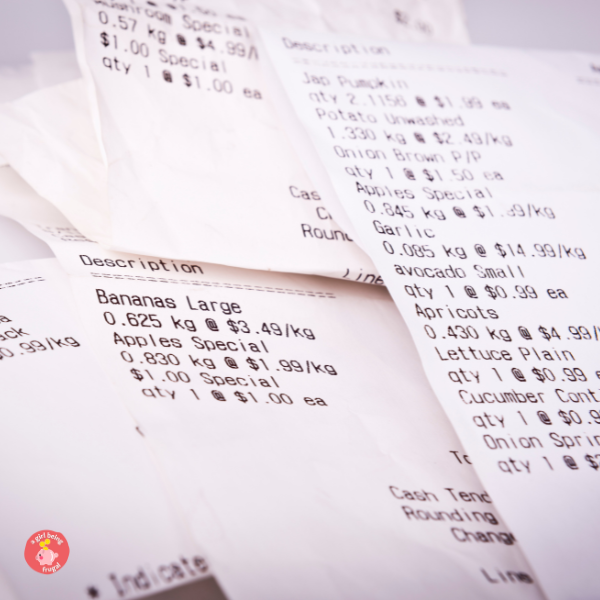Spending $100 a month on groceries can be challenging if you’re on a budget. But with careful planning and a few simple tips, it’s possible to make your food budget work for you. Here are some suggestions for how to spend $100 a month on groceries:
Buy in bulk and plan your meals.
The most crucial advice for paying less than $100 a month on groceries is to combine bulk food purchases with meticulous meal planning. For less than $70, 230 servings of rice can be purchased. Even if you eat rice every day, that quantity could easily last 4-5 months. Thus, purchasing food in bulk can help you save money.
Making a meal plan in advance also prevents you from purchasing food that won’t be consumed. Planning more than three meals is necessary if you get bored with the same foods. Meal planning should include anywhere from three days to a full week.
You might enjoy these posts:
- How Can I Spend $100 a Month on Groceries?
- How to Save Money on Canned Goods: Tips to Reduce Food Costs
- What Is A Reasonable Grocery Budget For 1?
- Is $200 A Month Enough For Groceries For One Person?
Purchase non-perishable foods.
Bulk purchases of non-perishable foods can be made at a low cost. These products include dried rice, dry quinoa, dried oats, frozen fruits and vegetables, canned fruits and vegetables, and dried fruits and vegetables.
These dried, canned, and frozen foods can provide you with many calories for every dollar spent. And you can easily buy a meal’s worth of calories for less than $1.
Anything that goes bad should be frozen.
It’s actually not too expensive to buy some fresh food. Consider bananas as an example. For $10, you can buy a lot of bananas. Sometimes, banana prices even drop. Almost all perishable items will last much longer in the freezer.
There are some things you should take into account when freezing your food. Be sure to cover it tightly in plastic wrap or aluminum foil. This will prevent freezer burn, which happens when air gets to your food and dries it out.
Labeling your food is also important so you know when you freeze it and how long it will last in the freezer.
Make use of sales and coupons.
While good deals can come in various forms, when it comes to food, they typically take the form of a sale or a coupon.
These days, every grocery store offers a unique campaign.
For instance, if you swipe your card and are a store member, you get a discount. Every time you check out, you can also get printed coupons, frequently for products you’ve already purchased. Additionally, keep an eye out for any exceptional sales in the weekly supermarket discounts that come and go.
Try cash-back credit cards.
If you’re looking to save money on your grocery bill, cash-back credit cards can be a great way to do it. With a cash-back credit card, you can earn rewards for every dollar you spend at the grocery store. Some cards offer bonus rewards for spending in certain categories, like groceries. To maximize your savings, be sure to compare different cash-back credit cards and choose the one that best fits your spending habits.
What groceries can I buy with 100 dollars?
When it comes to feeding yourself or your family, 100 dollars can go a long way if you know what groceries to buy. You can purchase all of the following food items:
- Oats: You’ll get more for your money and higher nutritional value if you prepare your own oats rather than purchasing instant packets. Add fruits, seeds, peanut butter, or anything else you have on hand as a garnish.
- Beans: Beans are adaptable food items that are high in fiber and protein.
- Frozen fruits and vegetables are a valuable addition to your $100 per month grocery list because they are brimming with essential vitamins and antioxidants.
- Cereal or granola: Purchase some healthy cereal to alternate with it for breakfast.
- Chickpeas: Make your own roasted chickpea appetizers, falafels, Buddha bowls, and hummus.
- Peanut butter: Perfect on oatmeal, in sandwiches with peanut butter and jelly, on pancakes, or just by the spoon!
Depending on local costs, you may be able to purchase quite a bit of food with a grocery budget of $100 a month. Check out more on the list according to average pricing here.
How much does a normal person spend on groceries per month?
According to the USDA, a single person’s typical monthly grocery expense ranges from $243 to $447. As the USDA estimates are greater for men and lower for both women and men aged 71 and up, it depends on your age and sex. It is totally up to you to decide whether or not that is feasible for your family, especially because it is predicated on making all meals and snacks at home.
Having said that, when creating a food budget for one, make sure to account for expenses like takeaway, meal subscriptions, grocery delivery, and restaurant meals, all of which can significantly increase monthly spending.
How can I feed my family for $100 a month?
Look at the meal plans developed by the US Department of Agriculture, which outline the cost of at-home food every month for August 2022 based on four different spending stipulations: frugal, low cost, moderate cost, and liberal.
However, with creativity and smart shopping strategies, you can feed your family for just $100 per month. Here are a few tips to help you get started:
- Stick to a budget. Before grocery shopping, list all the items you need and how much you are willing to spend on each item. This will help you stay on track while you’re at the store.
- Shop around. Compare prices at different stores before you make your purchase. You may be surprised at how much you can save by doing this.
- Plan for the cost of grocery delivery. Be sure to budget for service charges and tips if you choose grocery delivery. Before you completely renounce the service, consider the costs in relation to the money you would save. Getting your groceries delivered probably helps you refrain from making impulsive purchases. Additionally, shopping at home allows you more time to compare prices and stock your basket with goods for meal preparation.
- Look for food that is adaptable, affordable, and convenient. A good illustration of this is chicken on the rotisserie. One day, you can serve the chicken with a side of beans for dinner. The next day, you can toss a few pieces onto some greens for a protein-rich salad for lunch. On another day, you can make chicken salad sandwiches with it by mixing it with mayonnaise. Finally, after you’ve finished dissecting it, you can put it in a pot to make chicken stock. You don’t even have to cook it yourself on top of all that.


